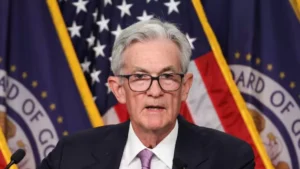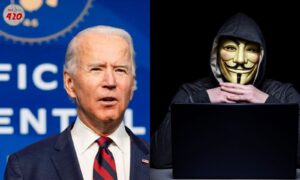
usa-flag
In a dramatic last-minute move, the U.S. Senate passed a stopgap funding measure on September 26, 2024, to avert a looming federal government shutdown. With the fiscal year coming to an end and a lack of consensus on the full budget, the temporary measure ensures the government will continue to operate for the time being. However, this is only a temporary solution, as the bill now heads to the House of Representatives, where partisan disagreements over spending cuts threaten to delay its approval.
In this article, we’ll explore the details of the stopgap bill, why a government shutdown was imminent, and what this decision means for both the public and policymakers in the weeks ahead.
What Is a Government Shutdown?
A government shutdown occurs when Congress fails to pass sufficient funding to keep federal agencies operating. Without an approved budget or continuing resolution (CR), non-essential government services are forced to shut down, employees are furloughed, and essential workers continue without pay. This disrupts everything from national parks to social services and causes widespread uncertainty, particularly for federal employees and contractors.
Historically, shutdowns have also strained public trust in government and created significant economic and political fallout. As we approach the end of the fiscal year on September 30, the need for a funding solution becomes urgent.
The Stopgap Bill: A Temporary Solution
The stopgap bill, also known as a continuing resolution, was passed by the Senate with bipartisan support, extending federal funding through December 1, 2024. This temporary measure provides more time for Congress to work out the details of the full-year budget, avoiding the immediate crisis of a government shutdown. The vote was a relief for many in Washington, as a shutdown would have had wide-reaching consequences, affecting millions of Americans who rely on government services.
However, this resolution only delays the issue. Congress now has a few weeks to come to an agreement on the full fiscal year budget or face another shutdown showdown in December.
Why Was a Shutdown Looming?
The primary reason for the shutdown threat was the inability of lawmakers to agree on the federal budget for fiscal year 2025. The divide, as in many recent budget discussions, centers around differing priorities between Democrats and Republicans on key issues such as defense spending, social services, and overall federal spending levels.
- Spending Cuts: Many conservative Republicans are pushing for significant spending cuts, particularly in areas like social programs, arguing that the national debt and deficit need to be addressed through fiscal restraint.
- Defense and Social Spending: Democrats and moderate Republicans want to see continued or increased funding for social programs, healthcare, education, and environmental initiatives, while defense spending remains a critical priority for many lawmakers.
- Disagreements on Fiscal Policy: The deeper ideological clash on how the government should manage its finances—through cuts, tax reform, or increased revenue—has led to a deadlock that left the federal budget hanging in the balance.
What’s Next for the House?
With the Senate passing the stopgap bill, the focus now shifts to the House of Representatives. The House, led by Speaker Kevin McCarthy, faces intense internal pressure, particularly from the conservative wing of the Republican Party, which has expressed dissatisfaction with the stopgap approach. These members, many of whom are aligned with the “Freedom Caucus,” demand deeper spending cuts and are resistant to any temporary fixes.
McCarthy must navigate these internal divisions, as well as work with Democrats, to get the votes necessary to pass the continuing resolution. This balancing act has the potential to delay or derail the passage of the bill before the deadline, once again raising the specter of a shutdown.
Partisan Disagreements Over the Budget
Partisan disagreements over the federal budget are nothing new in Washington, but in recent years, the divide has become more pronounced. Several key areas of contention are driving the current impasse:
- Social Safety Net Programs: Democrats and progressive lawmakers are advocating for increased funding for programs like Medicare, Medicaid, food assistance, and affordable housing. They argue that cutting these programs would harm millions of vulnerable Americans.
- Defense Spending: Republicans, particularly those in the Senate, have pushed for robust defense funding, citing global threats from countries like China and Russia. While Democrats don’t oppose defense spending outright, they advocate for a more balanced approach, with increased investments in domestic priorities.
- Environmental and Climate Spending: The Biden administration has made tackling climate change a priority, pushing for investments in green energy, infrastructure, and environmental protections. Some Republicans, however, are resistant to these proposals, viewing them as unnecessary or harmful to traditional industries like oil and gas.
- Fiscal Responsibility: Many conservative Republicans are advocating for significant cuts to discretionary spending, arguing that the U.S. national debt has ballooned to unsustainable levels. They want to see aggressive measures to reduce the deficit, which is currently at over $2 trillion.
These disagreements make it challenging for both chambers of Congress to find common ground on a comprehensive budget that addresses the diverse priorities of both parties.
What Happens if the House Doesn’t Pass the Bill?
If the House of Representatives fails to pass the stopgap bill before the current funding expires, the federal government will be forced into a partial shutdown. This would lead to the furlough of hundreds of thousands of federal employees, the suspension of many public services, and delays in the processing of critical government functions, from passports to social security checks.
During past shutdowns, government agencies were forced to scale back or suspend operations entirely. Non-essential services, such as national parks, museums, and many federal administrative functions, would be among the first to close. Essential services, such as military operations, border security, and law enforcement, would continue, but employees would work without pay until the shutdown ends.
Economic and Political Impact
The economic and political fallout from a government shutdown is significant. A prolonged shutdown could:
- Hurt the Economy: Each day of a shutdown costs the U.S. economy millions of dollars. The federal government is a major employer and contractor, and when those employees are furloughed, or contractors are unpaid, consumer spending slows, affecting local economies.
- Cause Market Volatility: Prolonged uncertainty about the government’s ability to fund itself can cause volatility in the stock markets. Investors may lose confidence in the U.S. government’s fiscal management, leading to declines in stock prices and a potential hit to 401(k)s and other retirement funds.
- Erode Public Trust: Each government shutdown erodes public trust in the federal government’s ability to function effectively. A sense of dysfunction and political gridlock can contribute to lower approval ratings for both Congress and the President.
- Political Fallout for Lawmakers: Members of Congress, particularly those up for re-election, risk facing voter backlash if a shutdown occurs. Previous shutdowns have seen public blame fall disproportionately on the party viewed as responsible for the gridlock, which could influence the outcome of upcoming elections.
The Road Ahead: Can a Compromise Be Reached?
As the continuing resolution heads to the House, the question remains: Can lawmakers find a compromise before time runs out? Both parties will need to make concessions, but with the 2024 presidential election looming, political posturing could further complicate negotiations.
For now, the stopgap measure offers temporary relief, but the deeper issues driving the budget stalemate remain unresolved. Both parties will need to come together in the coming weeks to avoid another shutdown threat in December, but that task may prove challenging given the current political climate.
Conclusion: A Temporary Fix, But the Clock Is Ticking
The Senate’s approval of the stopgap bill to avoid a government shutdown provides a much-needed reprieve, but it’s a temporary fix. The real battle over the federal budget is still ahead, with deep partisan divisions making the path to a comprehensive agreement uncertain. As the House of Representatives takes up the measure, all eyes will be on Washington to see if lawmakers can work together to prevent a shutdown, or if the nation will face yet another fiscal crisis later this year.


